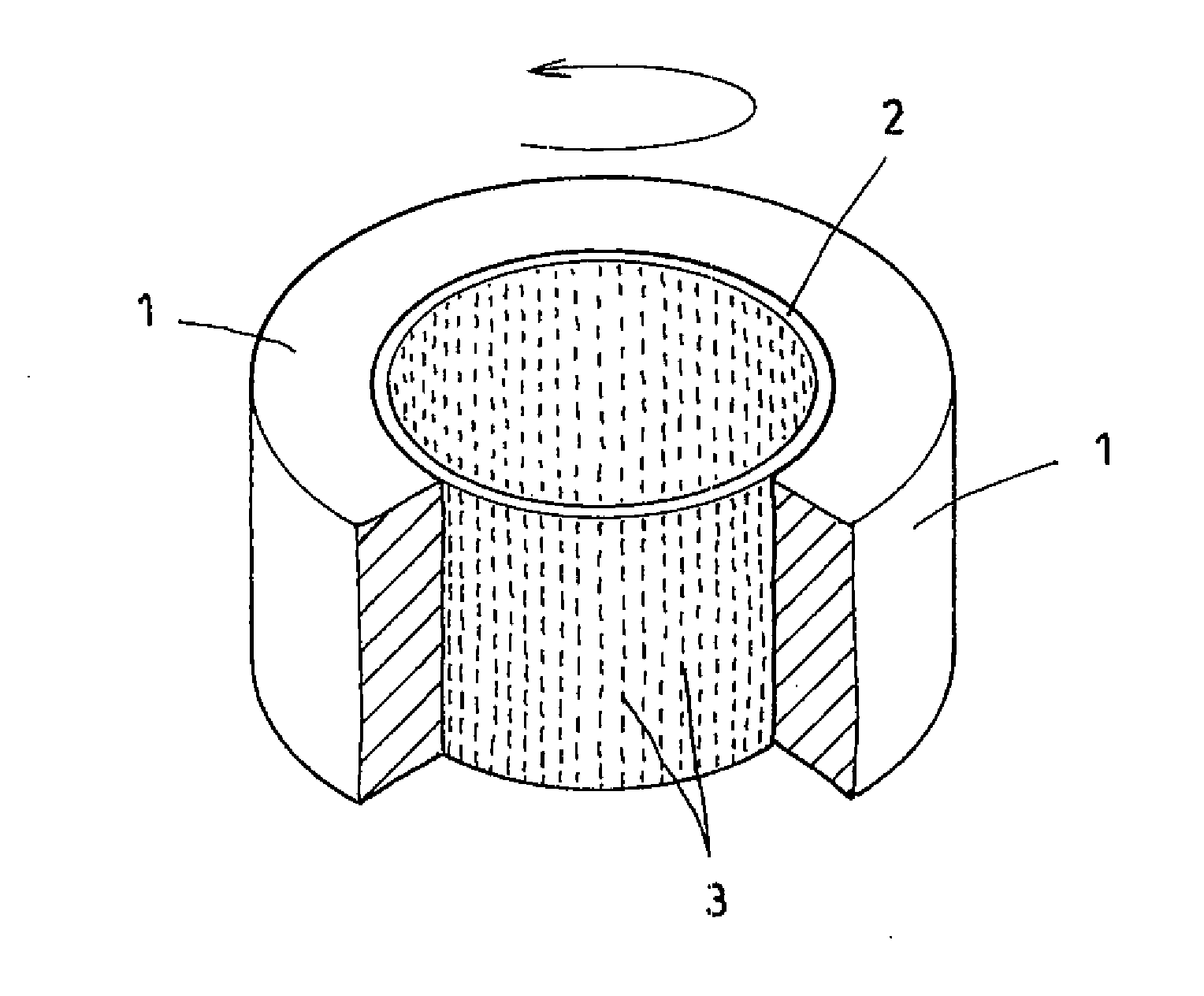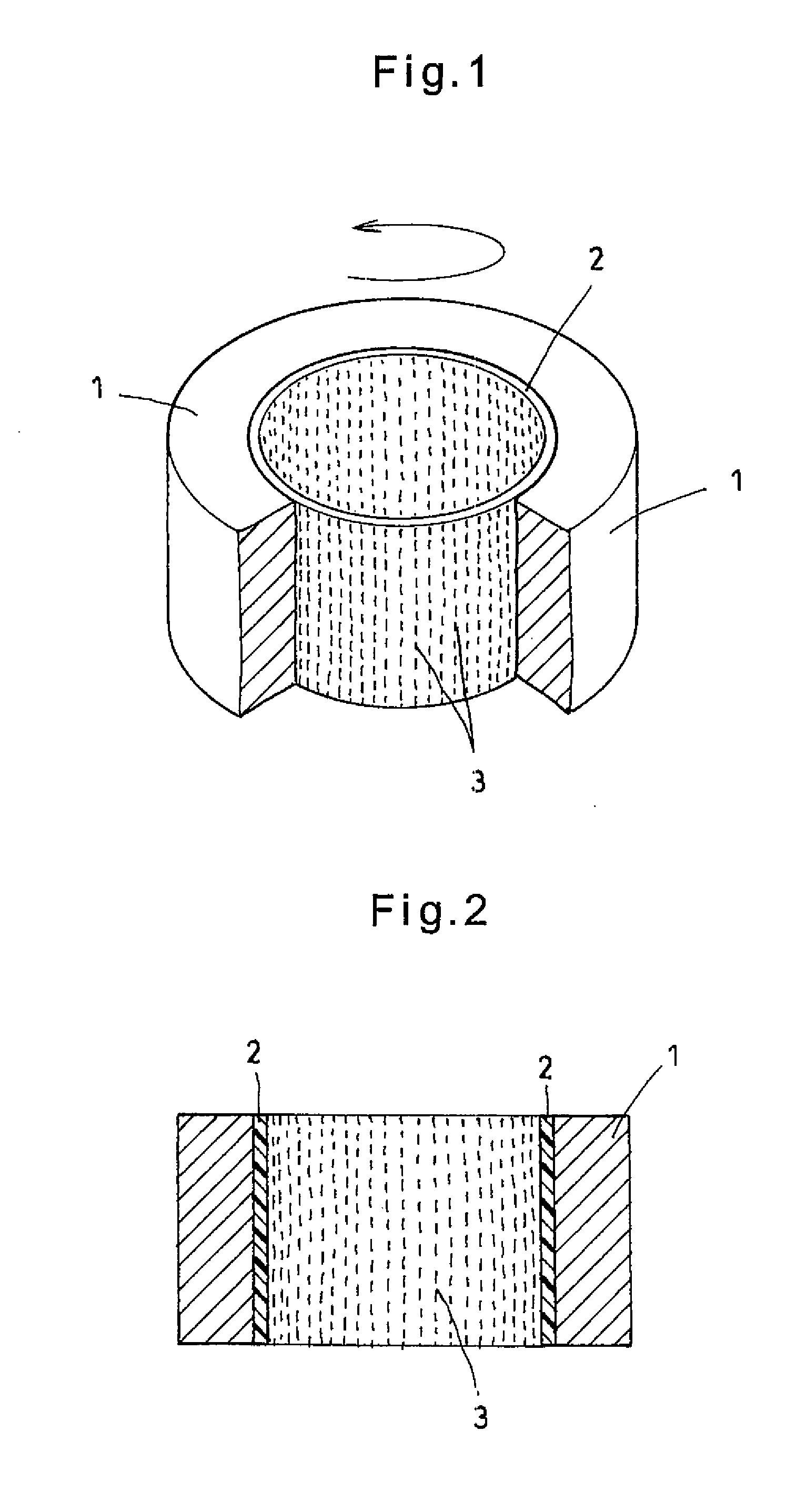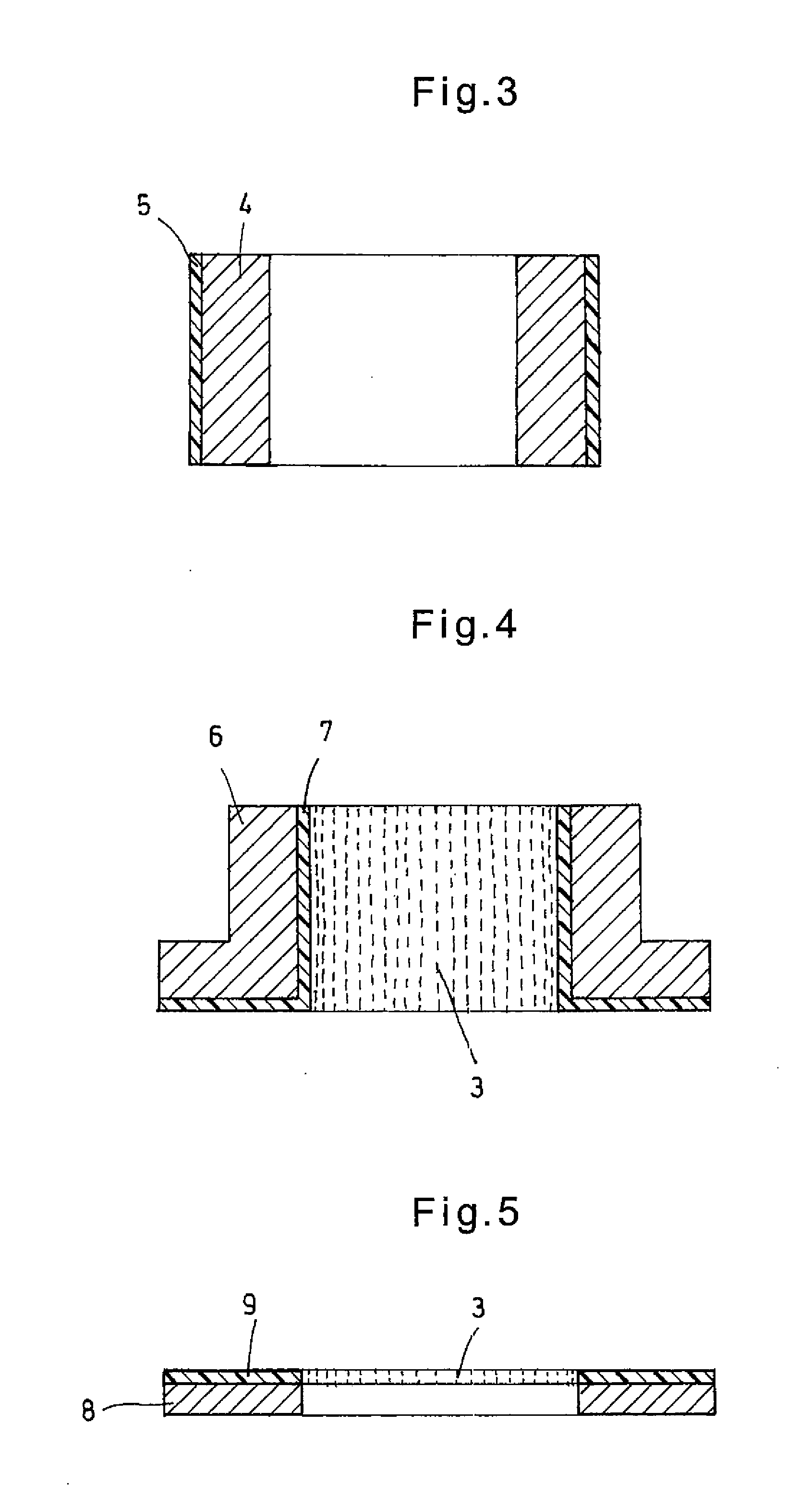Composite slide bearing
a slide bearing and composite technology, applied in the field of slide bearings, can solve the problems of difficult to use these conventional high-precision slide bearings to support rotary, unsuitable for use in the environment, etc., and achieve the effects of excellent load resistance, low friction, and low friction coefficien
- Summary
- Abstract
- Description
- Claims
- Application Information
AI Technical Summary
Benefits of technology
Problems solved by technology
Method used
Image
Examples
example 1
Examples (of the Invention) 1 to 22 and Comparative Examples 1 to 13
[0105]Substrates used in Examples of the invention (hereinafter simply referred to as “Examples”) and Comparative Examples are listed in Table 1. Raw materials used in the resin layers of Examples and Comparative Examples are listed below.
[0106]The melt viscosity values of the respective aromatic polyetherketone resins were measured by a capillograph made by Toyo Seiki Seisakusho, Ltd. with a capillary of 1 mm in diameter and 10 mm long, at a resin temperature of 380° C. and a shear velocity of 1000 s−1.
(1) Aromatic Polyetherketone Resin [PEK-1]
[0107]VICTREX PEEK 90P (melt viscosity: 105 Pa·s), made by Victrex
(2) Aromatic Polyetherketone Resin [PEK-2]
[0108]VICTREX PEEK 150P (melt viscosity: 145 Pa·s), made by Victrex
(3) Aromatic Polyetherketone Resin [PEK-3]
[0109]VICTREX PEEK 450P (melt viscosity: 420 Pa·s), made by Victrex
(4) PAN Carbon Fiber [CF-1]
[0110]Torayca MLD-30 (0.03 mm in average fiber length and 7 μm in a...
PUM
| Property | Measurement | Unit |
|---|---|---|
| thickness | aaaaa | aaaaa |
| length | aaaaa | aaaaa |
| temperature | aaaaa | aaaaa |
Abstract
Description
Claims
Application Information
 Login to View More
Login to View More - R&D
- Intellectual Property
- Life Sciences
- Materials
- Tech Scout
- Unparalleled Data Quality
- Higher Quality Content
- 60% Fewer Hallucinations
Browse by: Latest US Patents, China's latest patents, Technical Efficacy Thesaurus, Application Domain, Technology Topic, Popular Technical Reports.
© 2025 PatSnap. All rights reserved.Legal|Privacy policy|Modern Slavery Act Transparency Statement|Sitemap|About US| Contact US: help@patsnap.com



